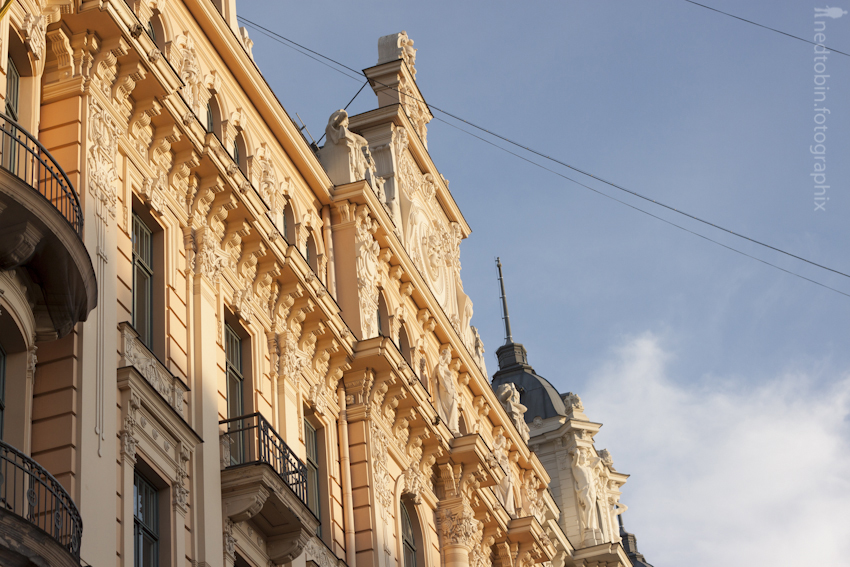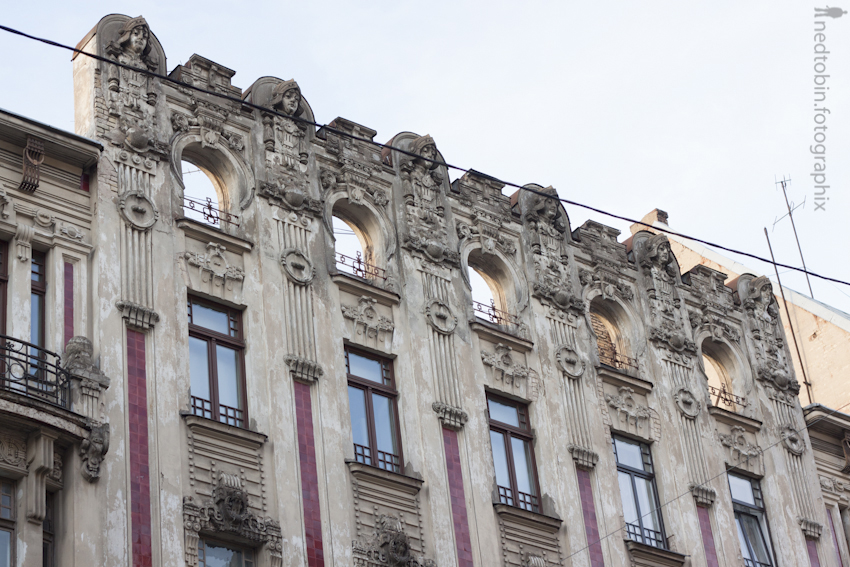Riga, Latvia is a place from the history books. You see, as trading increased in Europe it cultivated cities that were easy to get to by boat, making them into major trade centers. Northern Europe trading routes were dominated by a merchant guild known as the Hanseatic League or Hanse (Hansa) est. 1358. One trading city, a member of the Hanse, was Riga, situated at the tip of the Gulf of Riga and surrounded by the Daugava River which allowed the Western European traders to expand their trading routes deep into Eastern Europe.
Riga has a very impressive Art Nouveau district. Art Nouveau was most popular in France around 1890–1910 and was naturally adopted in cities around the world that were under European influence, and by the allure of Paris. Another architectural specialty of Riga is the 19th century wooden buildings.
Coming from North America, where the country is hardly 100 years old, let alone the buildings, this kind of thing is incredibly fascinating to witness, to see, to touch. I always step forth upon the cobblestone roads with a sense that I’m stepping side by side with ghosts of the past.

Art Nouveau, Riga, Latvia | source: Ned Tobin

Art Nouveau, Riga, Latvia | source: Ned Tobin

Art Nouveau, Riga, Latvia | source: Ned Tobin
When I spent time in Riga, it was turning into fall. As anybody that has experienced fall before would know, fall is full or oranges, golds, browns… and sun that’s bright but cooling down. Riga seemed to change seasons gracefully like one would expect a Greek god to age. My theory is that a city with such beautiful buildings cannot have a bad season. But perhaps it’s because such an old city has been through one or two, and knows how to weather them well!
Riga is the capital of Latvia, and the largest city in all the Baltic States (Estonia, Latvia, and Lithuania). One third of Latvia’s population lives in Riga, the capital having approximately 700,000 citizens. The city itself was founded in 1201.

Art Nouveau in Riga, Latvia | source: Ned Tobin

Riga, Latvia | source: Ned Tobin

Old graveyard in Riga, Latvia | source: Ned Tobin

Art Nouveau in Riga, Latvia | source: Ned Tobin

Art Nouveau in Riga, Latvia | source: Ned Tobin

19th Century Wooden Architecture in Riga, Latvia | source: Ned Tobin

19th Century Wooden Architecture in Riga, Latvia | source: Ned Tobin

19th Century Wooden Architecture in Riga, Latvia | source: Ned Tobin

Riga, Latvia | source: Ned Tobin

The Blackheads in Riga, Latvia | source: Ned Tobin

Riga, Latvia | source: Ned Tobin

Riga, Latvia | source: Ned Tobin

Riga, Latvia | source: Ned Tobin

19th Century Wooden Architecture in Riga, Latvia | source: Ned Tobin

Riga, Latvia | source: Ned Tobin

Riga, Latvia | source: Ned Tobin

Riga, Latvia | source: Ned Tobin
Have you ever been to the Baltics? I would love to hear where your favorite place is in the comments below!

